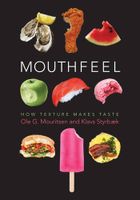Gums
By Ole Mouritsen and Klavs Styrbæk
Published 2017
It is possible to extract gums directly from a variety of raw ingredients, such as grains and vegetables. For thickening foods, however, the most important gums are a number of specific substances extracted from plant cells (e.g., locust bean gum, guar gum, and gum arabic), others produced by bacterial fermentation (e.g., xanthan gum and gellan gum), and still others manufactured using a chemical process (e.g., methyl cellulose). All these substances bind water very effectively and can be used as thickeners and stabilizers. As they are made up of very complex molecules that are highly branched, with the exception of gellan gum, they cannot be used for gelation unless actual gelling substances are also present. But even in minute concentrations, these gums can form very viscous liquids and stabilize emulsions, creating a soft texture in foods such as ice cream. They are stable across a range of temperatures and can tolerate freezing. When present in a greater concentration, gums retain their plasticity, a property that is useful in certain types of candy.
Become a Premium Member to access this page
Unlimited, ad-free access to hundreds of the world’s best cookbooks
Over 160,000 recipes with thousands more added every month
Recommended by leading chefs and food writers
Powerful search filters to match your tastes
Create collections and add reviews or private notes to any recipe
Swipe to browse each cookbook from cover-to-cover
Manage your subscription via the My Membership page
In this section
Part of
Advertisement
Advertisement


